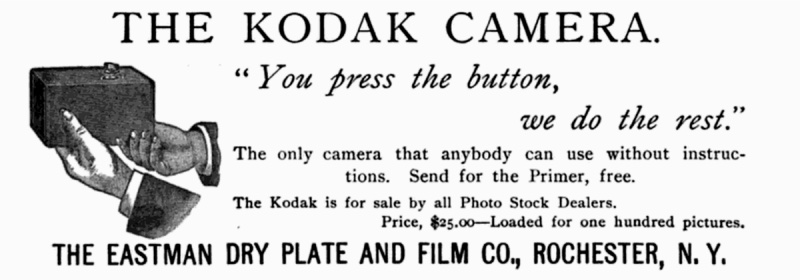Vertical integration at its best.
The rapid demise of Kodak, which filed for bankruptcy protection in 2012, is well known. So much so that it is a Harvard Business School case study. While hindsight tends to be 20/20, it was Kodak, through its scientist Steven Sasson, who invented the very cause of its demise, digital imaging. “There will never be a time where film does not have dominant market share”, a board member opined. Kodak was in such deep denial that months before its demise it was still proclaiming the superiority of film in full page ads in the Wall Street Journal.
But for most of the 125 years leading up to its death, Kodak did almost everything right.

Was there ever a more accurate advertising jingle?
From its earliest days, Kodak’s business model was focused on vertical integration. They wanted to own every step of the process, from camera manufacture to film manufacture to the making of the print. Indeed, those early Kodak ads which proclaimed “You press the button …. we do the rest” could not have been more accurate, as you bought the camera pre-loaded with film then handed in the whole thing at the photo store to get the film developed and printed with the results returned to you with a newly re-loaded camera. Brilliant. Kodak succeeded in demystifying the arcana of chemistry and process in exchange for a one-stop shopping experience, devoid of techno mumbo jumbo.
Kodak always concentrated on keeping things simple. When competitors came up with reloadable film cameras Kodak saw to it that the required roll film came wrapped in a lightproof leader along with a like trailer, allowing the camera to be loaded and unloaded in daylight. Yes, Kodak was there to invent the 35mm film cassette in 1934 making small cameras reloadable in daylight. And Kodak’s focus on simplification was never greater than with the introduction of the Instamatic in 1963.

The first Instamatic.
Cleverly named, there was no film to load. Instead the film came installed in a cartridge, along with an integral pressure plate, which was simply dropped into place, the camera back then snapped shut. It took less time to do than to write about. And while, as a student working photo retail to put myself through college, I witnessed many attempts, even the most cack-handed gave up trying to force the cartridge into the body the wrong way around as there was no way it would fit, though they did try. While the camera had a face only a mother could love it was probably the most sold brand of camera until smartphones came along in 2007 with the iPhone. In seven short years Kodak sold over 50 million Instamatics. Capitalizing on its success Kodak introduced the even smaller Pocket Instamatic in 1972, promptly selling another 25 million. And, as always, you pressed the button and Kodak did the rest. They made the cameras, the film, the chemicals, the lab gear and the printing paper. Total vertical integration.
No big, dominant company survives in the long term. Look at GE. It went bankrupt early in its life being kicked out of the (then) Dow 20, and today is a fraction of its peak size having been kicked out of the Dow 30, lost without direction and a mess of unrelated parts. One day, Apple will follow suit, suffering the same pattern of a brilliant founder followed by a bunch of MBA automaton managers to whom fresh ideas are alien and for whom political correctness trumps innovation. Eastman, Edison and Jobs do not repeat.
So while Kodak as we knew it is no more, it would be churlish indeed to deny its business genius in the era of film.